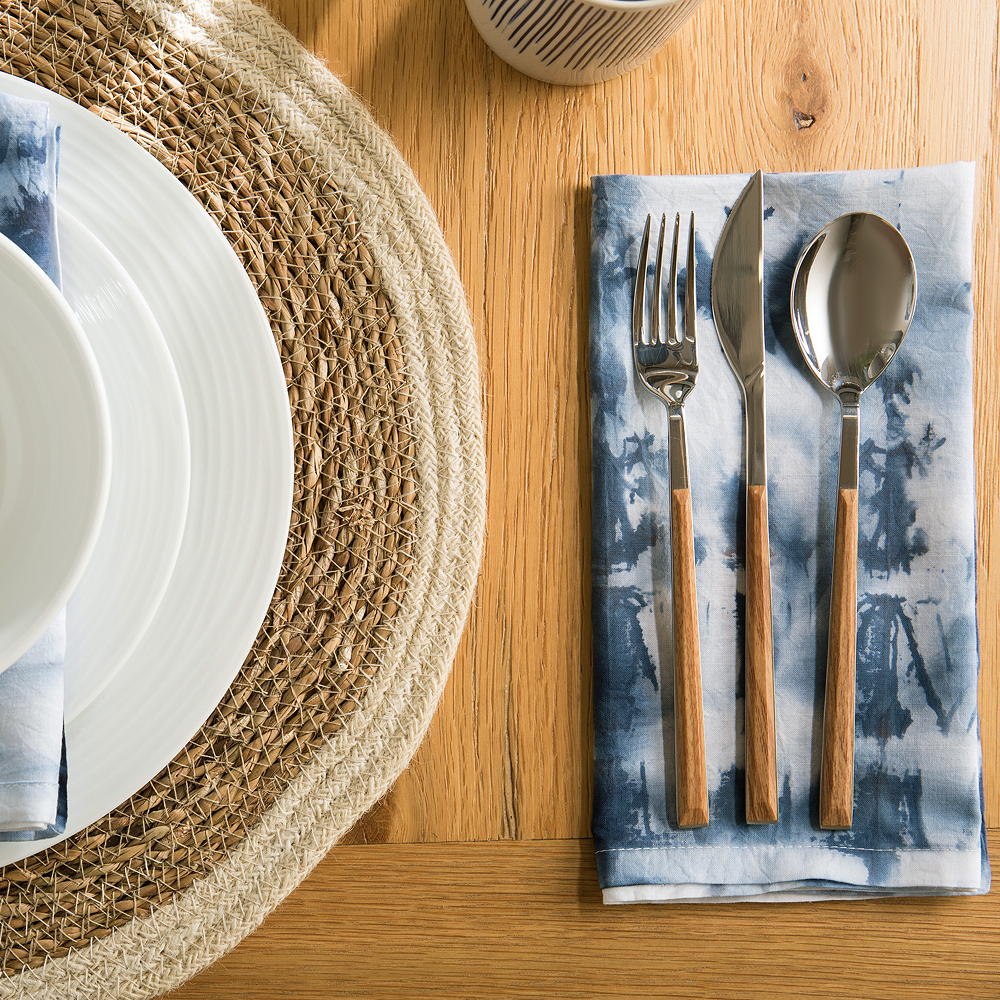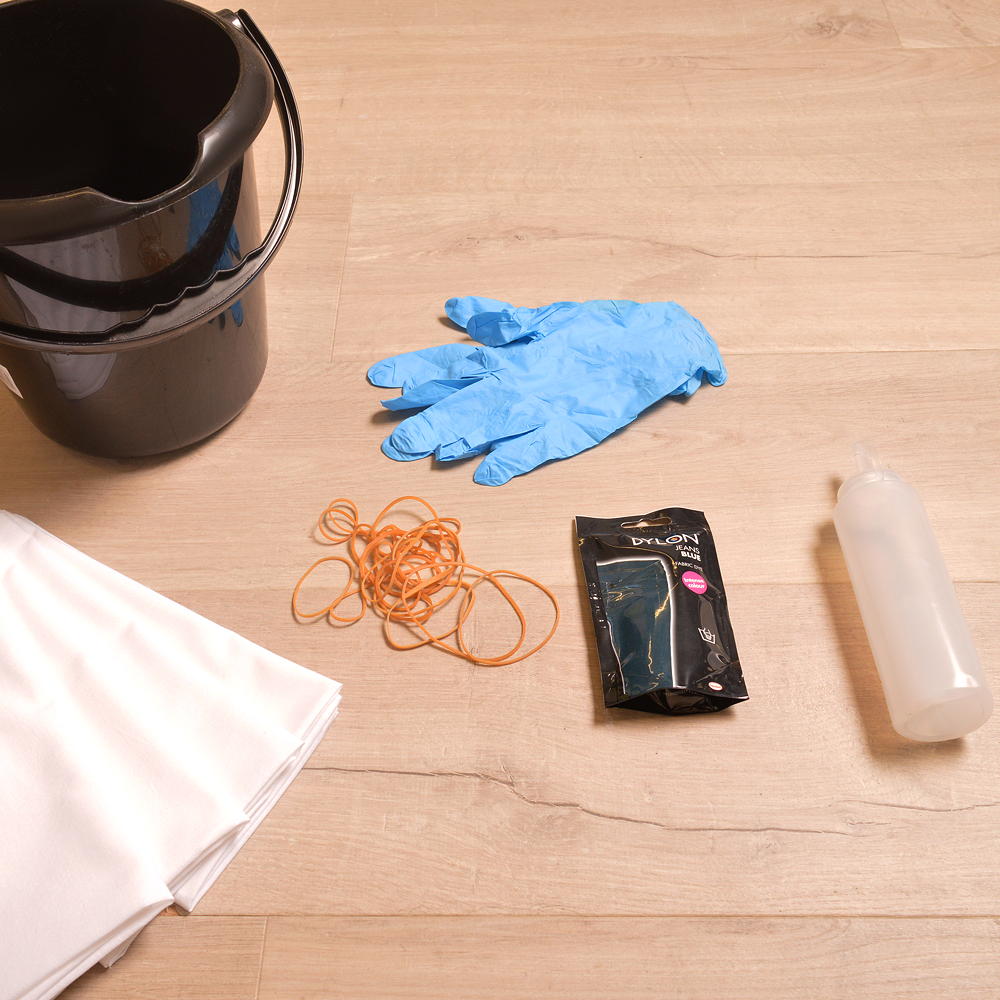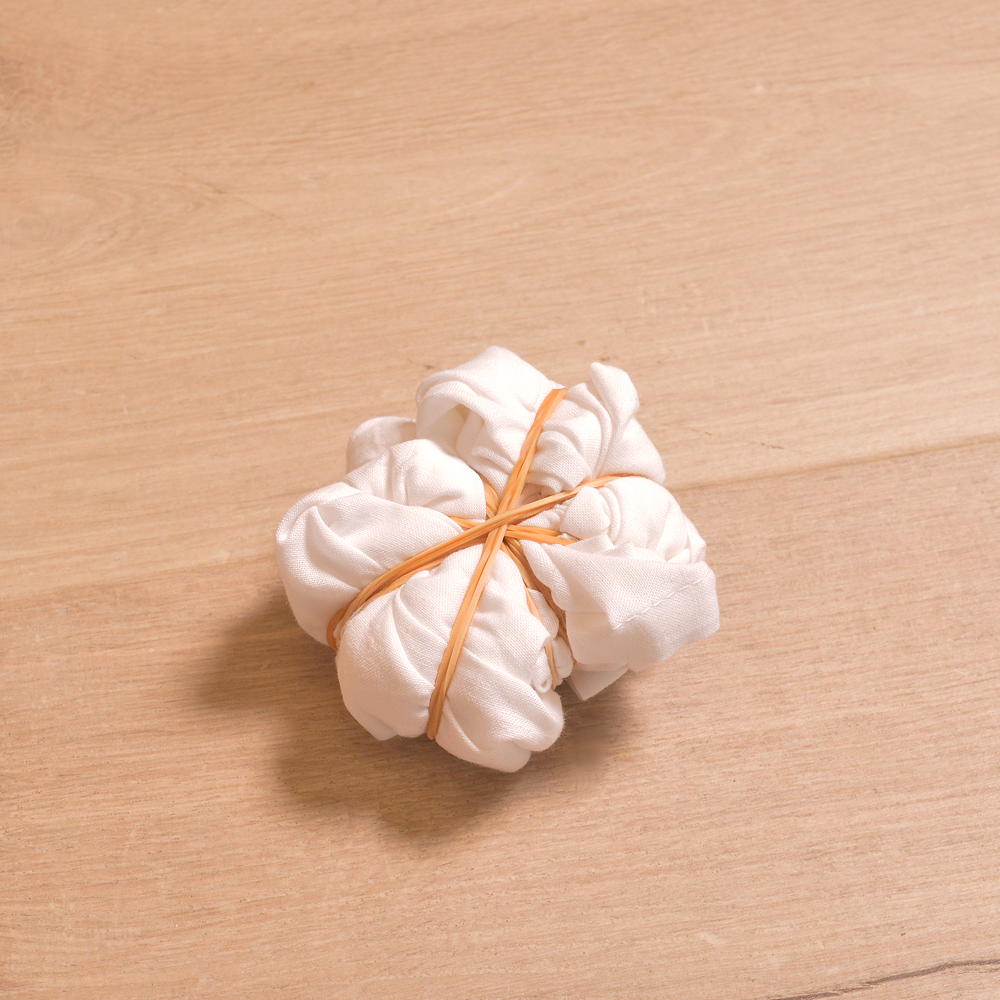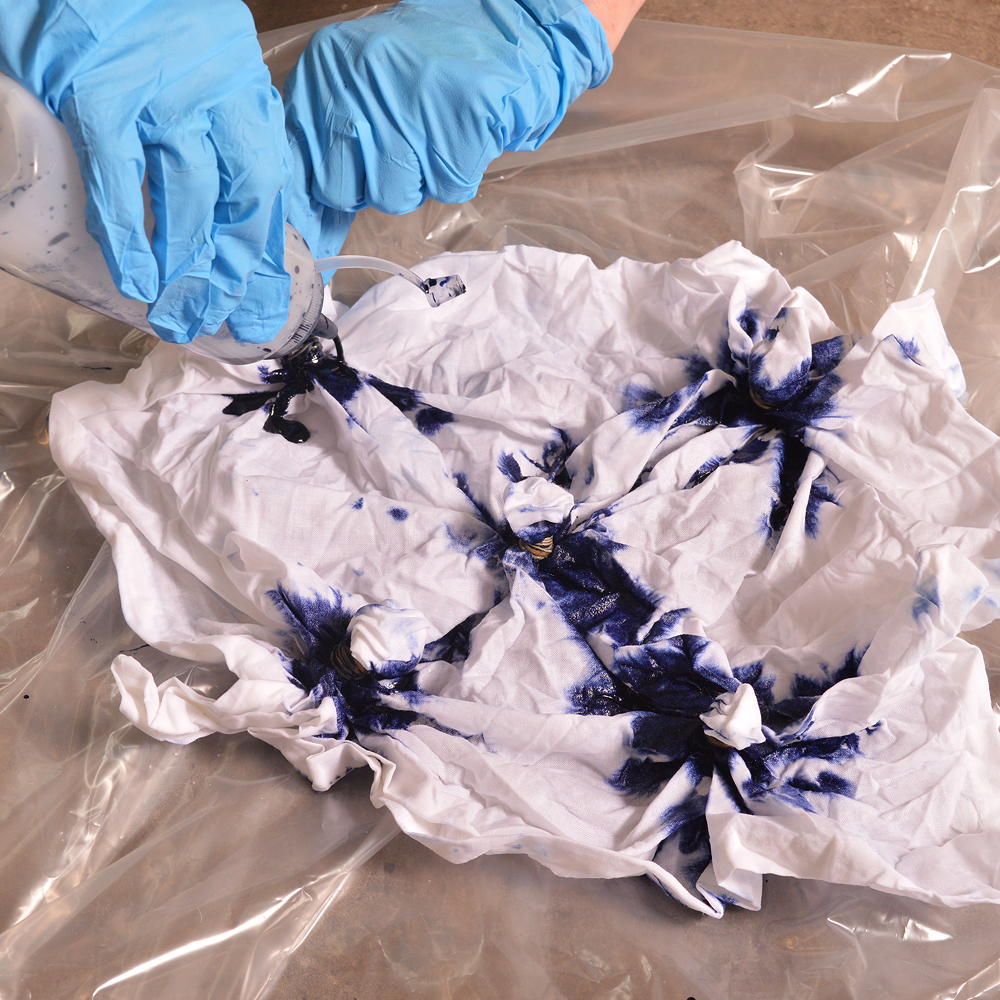These chic DIY tie-dye napkins will instantly spruce up your kitchen table
They are so simple

If you're looking for an easy and inexpensive way to spruce up your dining table, but why not try making these tie-dye napkins.
Related: This brilliant DIY garden tool storage is made using an old wooden pallet
Tie-dye is a super easy craft, that can be used to upcycle old table clothes, wall hangings or even bedding if you're feeling ambitious. However, if you've never tried it before, why not start small with some napkins.

While we are fans of multi-coloured tie-dying, especially for a children's room, this project uses a slightly different method to create a sophisticated accessory for your table.
'This is known as Shibori, a Japanese tie-dye technique that involves folding, twisting or bunching cloth together then dyeing it indigo,' explains Rebecca Snowden, Interior Style Advisor at FurnitureChoice.co.uk. 'Experimentation is key here and the tie-dye effect brings a summery feel to the home when matched with other natural elements like wood or rattan.'
How to make tie-dye napkins
You will need:

Fabric dye – Dylon has a great selection of hand-dyes
Rubber bands
White cotton napkins
Bucket
Empty Squeeze bottle
Rubber gloves
Salt
Step-by-step
1. Start by machine washing the napkins. Do not use any fabric softener as this may repel the ink later.
Sign up to our newsletter for style inspiration, real homes, project and garden advice and shopping know-how
2. While the napkins are being washed, prepare the dye in the bucket. Follow the instructions on the packet. You might need to add salt to help the fabric absorb the dye easier, but always follow the instructions.
3. When the napkins are still damp, use the rubber bands to tie the fabric into your preferred pattern.
Swirls:

Lay the napkin flat, pinch and twist the centre of the napkin. Keep twisting the fabric from the centre until it looks like a flat rose shape. Tightly wrap with six rubber bands overlapping each other.
Crumpled:
The easiest method. Simply crumble the napkin into a ball and tie rubber bands around the napkins to split into sections.
Stripes:
Fold the napkins from the bottom up into pleats so the napkin is in a long thin shape. Then tie about five to eight bands in sections along with the napkin.
Circles:

Choose where you want the circles of dye to appear. Pinch and pull those areas into rubber bands so the fabric sticks up.
4.Pour the dye into the squeezy bottle for easy application, and spread plastic over your work surfaces.
5.Take the tied napkins and squeeze ink onto the tied areas where the rubber bands are. Leave them tied up for 24 hours.

6. Rinse the napkins with cold water until the water runs clear. This will reduce any dye bleeds later.
7. Remove the rubber bands and rinse with warm water until the water runs clear.
8. Finally, machine wash the dyed napkins again. Make sure there are no other items of clothing in the washing machine in case the dye bleeds.
9. Dry and iron them so they are ready to use!
Will you be trying out this super simple DIY project at home?

Rebecca Knight has been the Deputy Editor on the Ideal Home Website since 2022. She graduated with a Masters degree in magazine journalism from City, University of London in 2018, before starting her journalism career as a staff writer on women's weekly magazines. She fell into the world of homes and interiors after joining the Ideal Home website team in 2019 as a Digital Writer. In 2020 she moved into position of Homes News Editor working across Homes & Gardens, LivingEtc, Real Homes, Gardeningetc and Ideal Home covering everything from the latest viral cleaning hack to the next big interior trend.